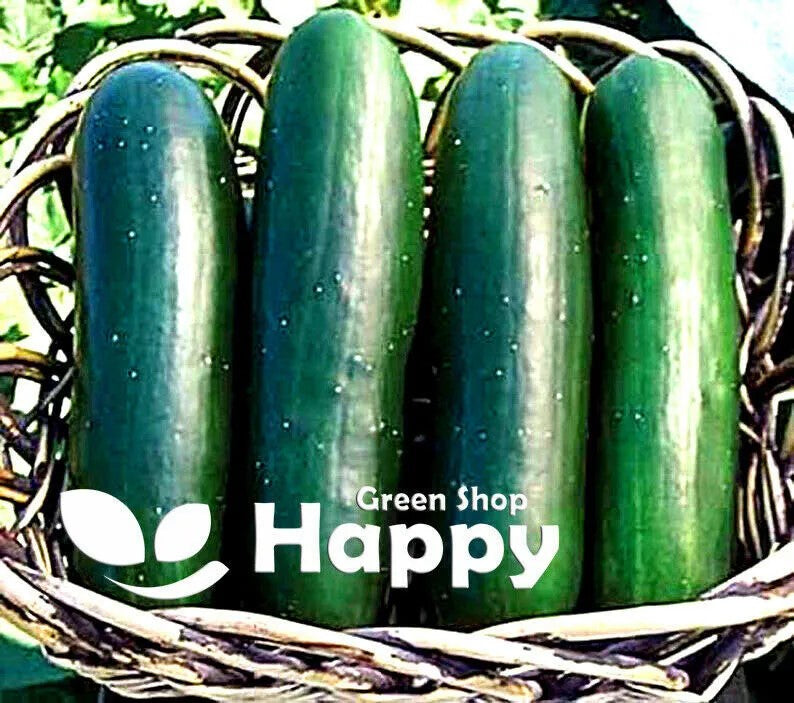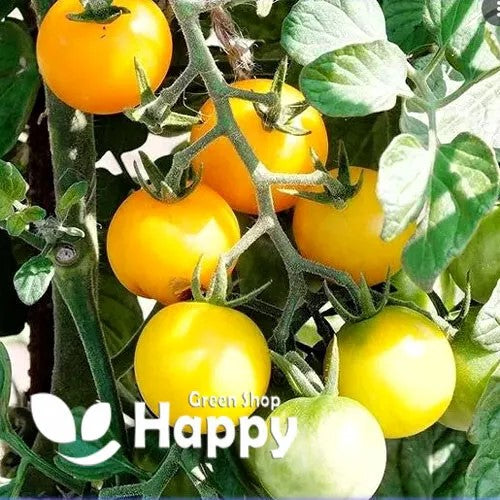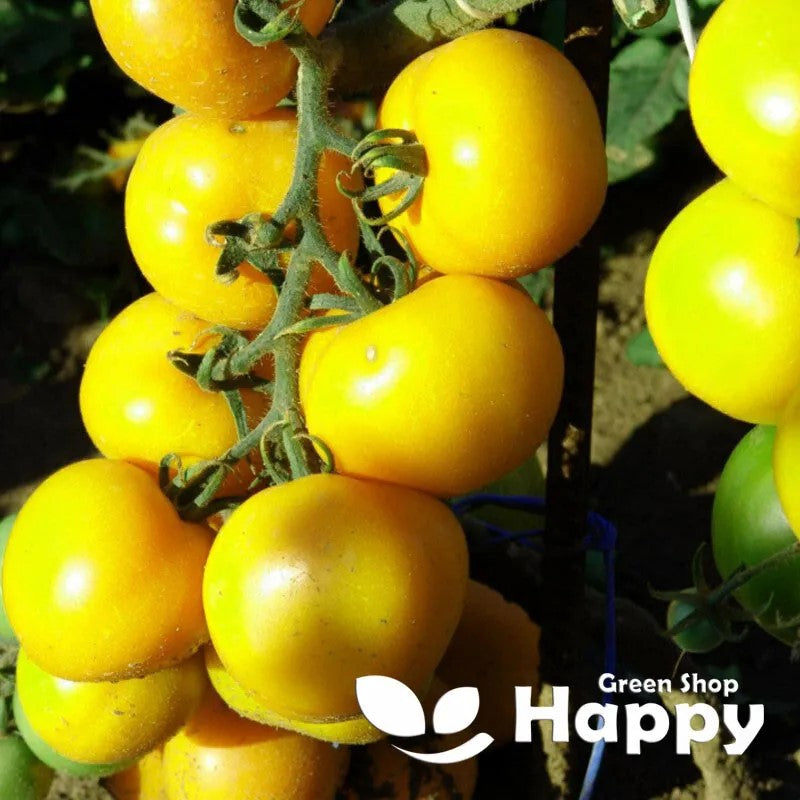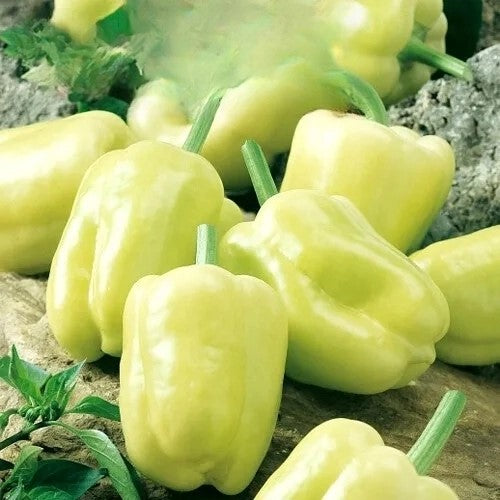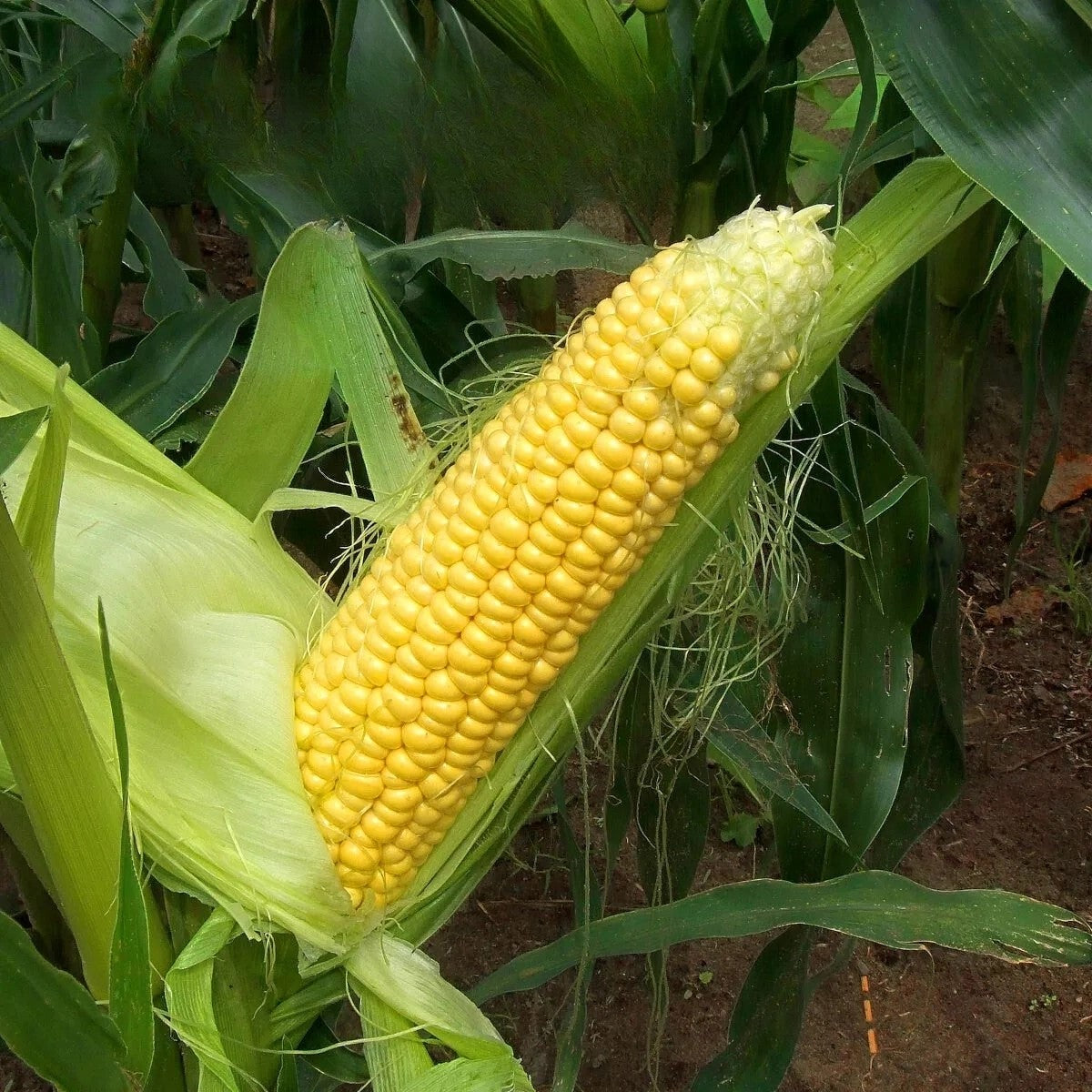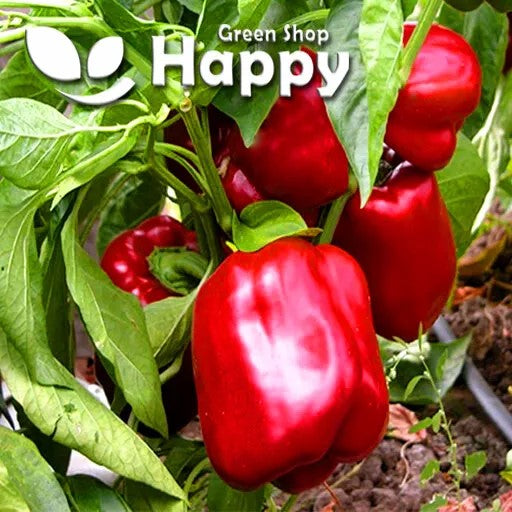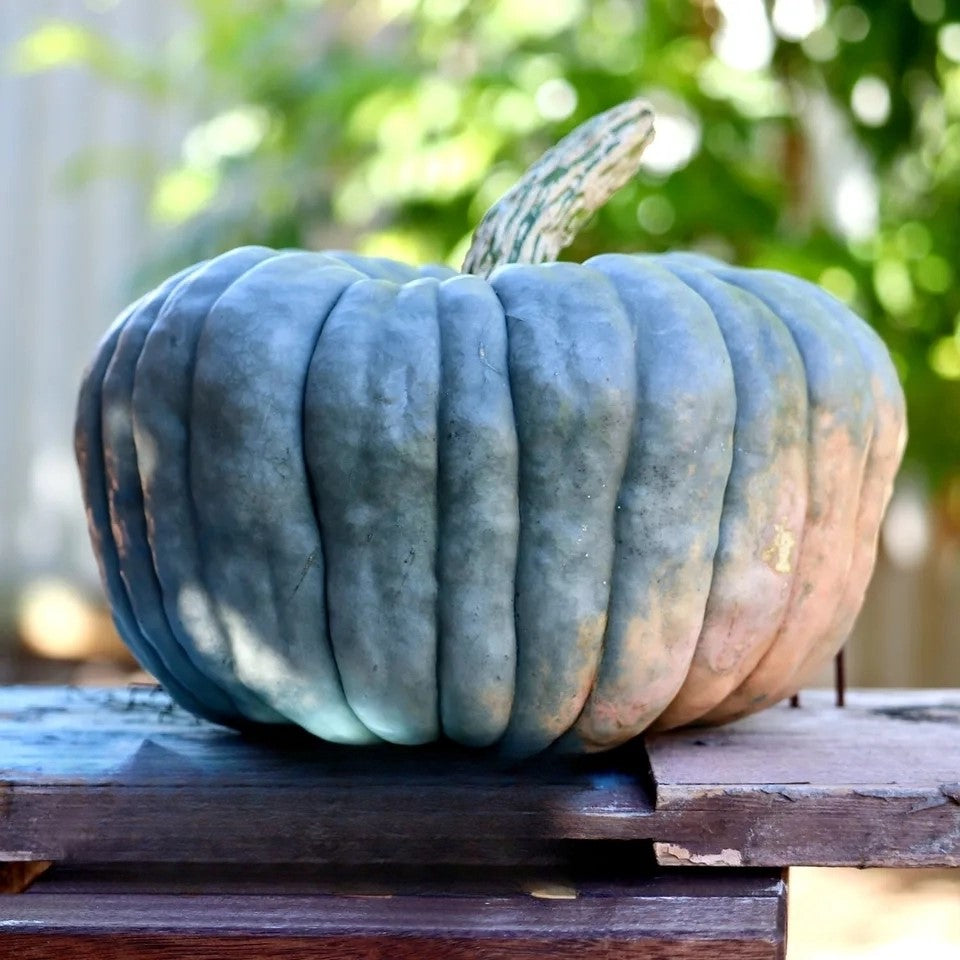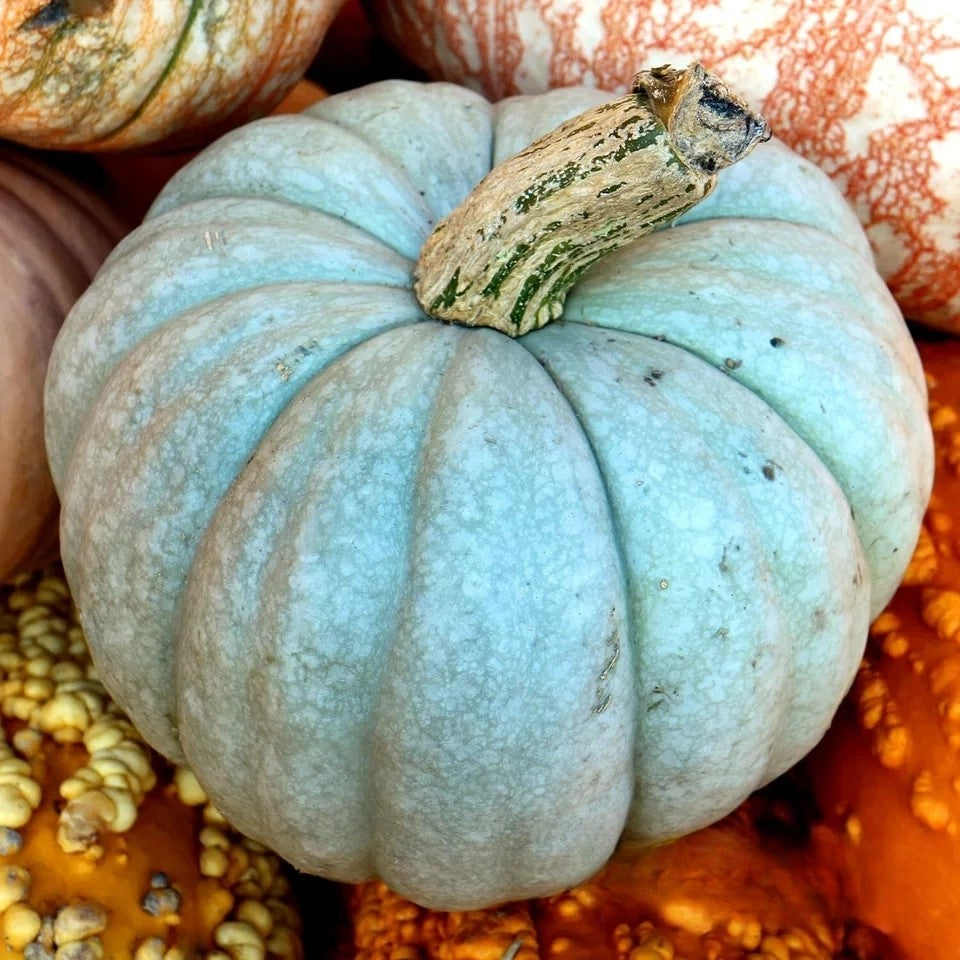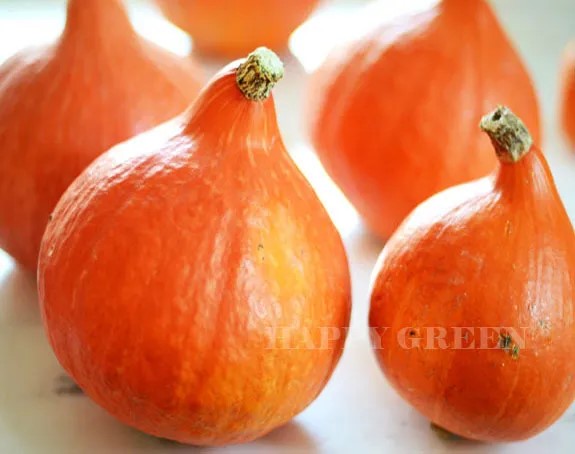Sort by:
49 products
49 products
Cucumber ‘Jogger’ F1 – Seeds (Cucumis sativus)
Cucumber ‘Jogger’ F1 is a high-quality hybrid variety bred for excellent yields and superb taste. Producing smooth, dark green fruits around 18–20 cm long, this cucumber is perfect for slicing, salads, and fresh snacking. Its vigorous plants offer a long harvest window with strong resistance to common cucumber diseases, making it a reliable choice for gardeners.
How to Grow
-
Sow indoors: April – May in pots at 20–25°C.
-
Transplant to greenhouse or outdoors after last frost.
-
Plant spacing: 60 cm between plants.
-
Prefers fertile, well-drained soil and consistent watering.
-
Train plants up supports or trellis for best results.
Key Features
-
F1 hybrid – uniform, high-yielding plants
-
Smooth, dark green fruits (18–20 cm long)
-
Crisp texture and refreshing taste
-
Excellent disease resistance
-
Suitable for greenhouse or outdoor growing
Ideal For
-
Fresh salads and healthy snacking
-
Home gardens and allotments
-
Continuous summer harvests
Sowing & Harvest
-
Sow: April – May
-
Harvest: June – September
Quick Tip
Feed regularly with a tomato fertilizer once fruiting begins to encourage heavy cropping.
Tomato 'Yellow Romus' – Seeds (Solanum lycopersicum)
The Tomato 'Yellow Romus' is a productive variety that produces bright yellow, elongated plum-shaped fruits with a mild, sweet flavor. Known for its attractive golden color and meaty texture, this tomato is excellent for fresh eating, sauces, and preserves. A reliable mid-season crop, it’s perfect for greenhouse or outdoor cultivation and adds vibrant color to your tomato harvest.
How to Grow
-
Sow indoors from February to April, 0.5 cm deep in trays or pots.
-
Keep at 18–22°C until germination.
-
Transplant seedlings into larger pots, then outdoors or into a greenhouse after frost has passed.
-
Support plants with stakes or canes for best yields.
Key Features
-
Elongated, plum-shaped golden yellow fruits
-
Mild, sweet, and meaty flavor
-
High yields throughout the season
-
Suitable for greenhouse or outdoor growing
-
Excellent for fresh use, sauces, and preserving
Ideal For
-
Fresh salads and snacks
-
Homemade sauces and preserves
-
Bright, colorful vegetable gardens
Sowing & Harvest
-
Sow: February to April
-
Plant out: May to June
-
Harvest: July to September
Quick Tip
-
For the sweetest flavor, allow fruits to ripen fully on the vine before harvesting.
Tomato Pink 'Maliniak' – Seeds (Solanum lycopersicum)
The Tomato Pink 'Maliniak' is a traditional Polish heirloom variety known for its large, pink, fleshy fruits bursting with rich, sweet flavor. This mid-season tomato is a favorite among home gardeners for its outstanding taste, meaty texture, and versatility in the kitchen. Perfect for slicing, fresh salads, and sandwiches, it also performs beautifully in sauces and preserves.
How to Grow
-
Sow indoors from February to April, 0.5 cm deep in seed trays or pots.
-
Keep at 18–22°C until germination.
-
Transplant seedlings into larger pots when strong enough, then outdoors or into a greenhouse after frost has passed.
-
Provide support as plants grow tall and bear heavy fruits.
Key Features
-
Large, pink fleshy fruits with rich, sweet taste
-
Traditional Polish heirloom tomato
-
Mid-season variety with reliable yields
-
Ideal for fresh eating and cooking
-
Strong, healthy plants suitable for greenhouse or outdoor cultivation
Ideal For
-
Fresh salads and sandwiches
-
Cooking into sauces and soups
-
Traditional and heirloom vegetable gardens
Sowing & Harvest
-
Sow: February to April
-
Plant out: May to June (after frost)
-
Harvest: July to September
Quick Tip
-
For best flavor, allow fruits to fully ripen on the vine before picking. Regular feeding boosts size and sweetness.
Tomato 'Black Prince' – Seeds (Solanum lycopersicum)
The Tomato 'Black Prince' is a famous Russian heirloom variety, cherished for its rich, earthy flavor and striking deep reddish-brown fruits. Medium-sized and packed with a sweet yet complex taste, this tomato is perfect for fresh eating, salads, roasting, and sauces. Hardy and adaptable, it thrives in both outdoor gardens and greenhouses, offering consistent yields of uniquely colored fruits.
How to Grow
-
Sow indoors from February to April, 0.5 cm deep in trays or pots.
-
Keep at 18–22°C until germination.
-
Transplant seedlings into larger pots, then outdoors or greenhouse after frost.
-
Support plants with canes or cages to encourage heavy yields.
Key Features
-
Traditional Russian heirloom tomato
-
Medium-sized fruits with deep reddish-brown skin
-
Distinctive sweet, rich, and earthy flavor
-
Reliable yields in greenhouse or outdoor conditions
-
Excellent for fresh eating, cooking, and sauces
Ideal For
-
Heritage vegetable gardens
-
Fresh slicing and salads
-
Cooking, roasting, and preserving
Sowing & Harvest
-
Sow: February to April
-
Plant out: May to June
-
Harvest: July to September
Quick Tip
-
For best flavor, allow fruits to fully ripen on the vine before harvesting.
Sweet Pepper 'Boneta' – Seeds (Capsicum annuum)
Sweet Pepper 'Boneta' is a vibrant, high-yielding variety producing medium-sized, glossy fruits with a sweet, mild flavor. Perfect for fresh salads, roasting, grilling, or stuffing, it adds color and taste to any dish.
This compact and vigorous plant is suitable for home gardens, containers, and greenhouse cultivation, making it ideal for both beginners and experienced gardeners.
How to Grow
-
Sow indoors: February – April
-
Transplant outdoors: May – June, after last frost
-
Depth: 0.5–1 cm
-
Spacing: 40–50 cm between plants, rows 60–80 cm apart
-
Position: Full sun, warm and sheltered
-
Soil: Fertile, well-drained, enriched with compost
-
Watering: Keep soil consistently moist but not waterlogged
Key Features
-
Medium-sized, glossy fruits with sweet, mild flavor
-
High-yielding and compact growth
-
Ideal for salads, roasting, grilling, and stuffing
-
Suitable for home gardens, containers, and greenhouses
-
Easy to grow and maintain
Harvest
-
Harvesting period: July – September
-
Pick fruits when fully colored and firm for best taste and quality.
Short Tip
Support plants with small stakes if needed to keep fruits off the ground and prevent breakage.
Sweet Corn 'Golden Bantam' – Seeds
(Zea mays) – Classic Heirloom Variety
Sweet Corn 'Golden Bantam' is one of the most famous and reliable heirloom corn varieties, loved for its richly flavored golden-yellow kernels. Compact and highly productive, this variety produces medium-sized cobs packed with tender, sweet corn. Known for its adaptability and dependable harvests, it has been a gardener’s favorite for over a century.
Key Features
-
Type: Sweet corn (annual)
-
Height: 150–180 cm tall
-
Cobs: 12–18 cm long, golden-yellow kernels
-
Flavor: Classic sweet and creamy corn taste
-
Harvest: Mid-season (75–90 days after sowing)
-
Heritage: Famous heirloom, first introduced in the early 1900s
Ideal For
-
Home gardens and allotments
-
Fresh eating, grilling, and steaming
-
Freezing and preserving
-
Classic heirloom vegetable collections
Sowing & Growing
-
Sow indoors: April–May, in pots or modules.
-
Sow outdoors: May–June, after frost has passed.
-
Spacing: 20–25 cm between plants; 60 cm between rows.
-
Soil: Rich, fertile, well-drained soil.
-
Sunlight: Full sun, sheltered location.
-
Pollination: Plant in blocks of at least 3–4 rows for best cob formation.
Care Tips
-
Water well, especially during dry periods and when tassels appear.
-
Mulch around the base to retain soil moisture.
-
Harvest when silks turn brown and kernels exude milky juice when pressed.
Sweet Bell Pepper 'California Wonder' Red – Seeds (Capsicum annuum)
Sweet Bell Pepper 'California Wonder' Red is a classic, high-yielding variety producing large, blocky, bright red fruits with a sweet, crisp flavor. Perfect for fresh eating, salads, roasting, or stuffing, it is a versatile addition to any vegetable garden.
This vigorous and productive plant thrives in warm, sunny conditions and is ideal for home gardens, greenhouses, and containers.
How to Grow
-
Sow indoors: February – April
-
Transplant outdoors: May – June, after last frost
-
Depth: 0.5–1 cm
-
Spacing: 40–50 cm between plants, rows 60–80 cm apart
-
Position: Full sun, sheltered and warm
-
Soil: Fertile, well-drained, rich in organic matter
-
Watering: Keep soil consistently moist
Key Features
-
Large, blocky, bright red fruits with sweet, crisp flavor
-
High-yielding and vigorous growth
-
Ideal for fresh eating, salads, roasting, and stuffing
-
Suitable for home gardens, greenhouses, and containers
-
Classic, reliable bell pepper variety
Harvest
-
Harvesting period: July – September
-
Pick fruits when fully colored and firm for best flavor.
Short Tip
Regular harvesting encourages continuous production and prevents fruits from becoming overripe.
Squash 'Queensland Blue' – Seeds (Cucurbita maxima)
Squash 'Queensland Blue' is a robust pumpkin variety producing large, flattened, blue-grey fruits with sweet, golden-orange flesh. Its rich flavor makes it perfect for roasting, soups, stews, and baking. Known for excellent storage qualities, it keeps well throughout the winter months.
Ideal for home gardens, allotments, and vegetable patches, this variety combines high yield with a striking appearance and outstanding taste.
How to Grow
-
Sow indoors: March – April
-
Sow outdoors: May – June, after last frost
-
Depth: 2–3 cm
-
Spacing: 100–120 cm between plants
-
Position: Full sun, sheltered from strong winds
-
Soil: Fertile, well-drained, enriched with compost
-
Watering: Regular and deep, especially during fruiting
Key Features
-
Large, flattened blue-grey fruits with sweet, golden-orange flesh
-
Excellent for roasting, soups, stews, and baking
-
High-yielding and vigorous growth
-
Long storage life, ideal for winter use
-
Decorative and versatile vegetable
Harvest
-
Harvesting period: September – November
-
Pick fruits when the skin is hard and fully colored for best storage and flavor.
Short Tip
Leave a few centimeters of stem when harvesting to extend storage life.
Squash 'Uchiki Kuri' Seeds (Cucurbita maxima)
Discover the gourmet favorite Squash 'Uchiki Kuri', also known as the Red Kuri or Onion Squash. This reliable Japanese variety produces small, tear-drop shaped fruits with vibrant orange skin and rich, nutty-sweet golden flesh. Perfect for roasting, soups, curries, and baking, it’s a versatile squash that stores well for winter use.
How to Grow
-
Sow indoors in late spring or directly outdoors after frost.
-
Prefers fertile, well-drained soil in full sun.
-
Sow 2–3 seeds 2 cm deep in small pots or stations.
-
Transplant or thin to one strong plant per station, 90–120 cm apart.
-
Water regularly and feed for strong growth.
Key Features
-
Traditional Japanese squash with bright orange fruits
-
Nutty, sweet flavor with smooth golden flesh
-
Compact, manageable fruits (1–2 kg each)
-
Stores well for winter use
-
High-yielding and easy to grow
Ideal For
-
Roasting, soups, curries, and baking
-
Winter storage and long-lasting kitchen use
-
Home gardeners seeking gourmet squash varieties
-
Allotments, vegetable beds, or spacious gardens
Sowing
-
Best time: April to June
-
Depth: 2 cm
-
Spacing: 90–120 cm between plants
-
Position: Full sun, fertile soil
-
Harvest: September to October
Quick Tip
-
Cure fruits in the sun after harvest for longer storage life and enhanced sweetness.
Showing 18/49


